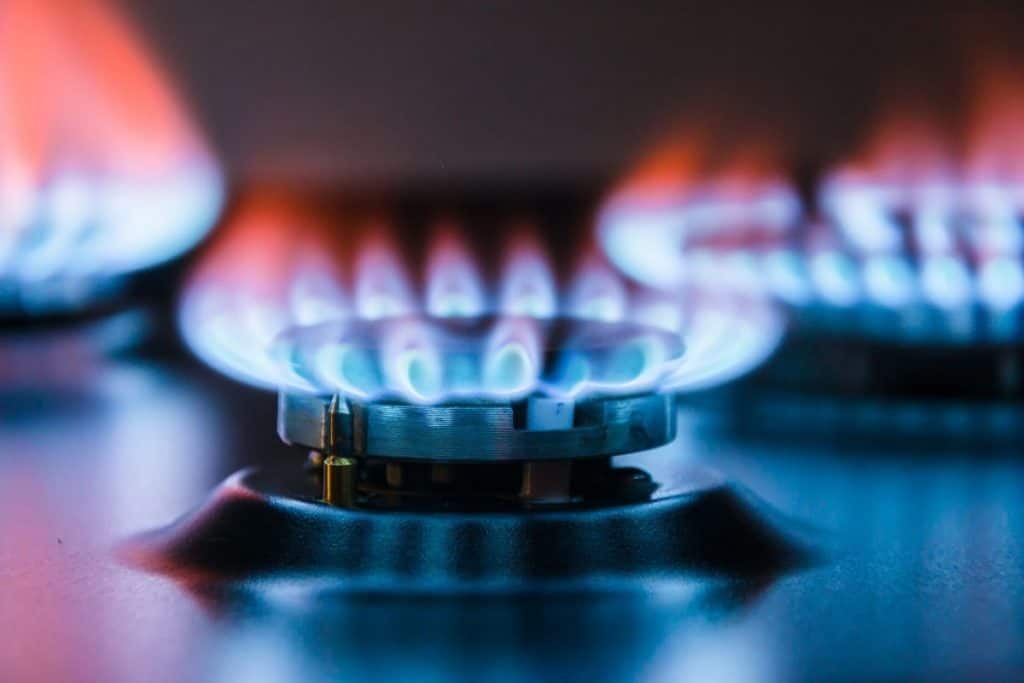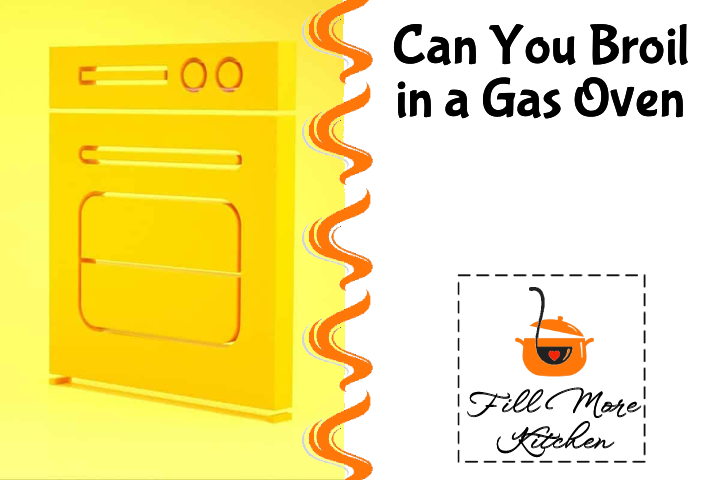Often, individuals with ovens overlook the broil function due to a lack of understanding. Broiling and baking both utilize radiant heat to cook food; however, broiling employs high temperatures that rapidly cook the surface of the food, making it an excellent technique for achieving ideal charring or caramelization.
Yes, it is possible to broil in a gas oven as they come equipped with a broil feature. The coils responsible for heating the oven during baking and roasting are also utilized for broiling purposes. Depending on the location of the heating element, the broiler can be found either within the oven or in a drawer beneath it.
Broiling food in a gas oven can result in delicious meals with sealed-in flavors and crispy textures for meats and vegetables. However, it is crucial to be mindful of the broiling process as it can easily lead to burnt food. Therefore, having knowledge on how to broil and keeping a constant watch on the food while broiling are essential.
How Do You Broil in a Gas Oven?
Broiling in a gas oven is no different from broiling in an electric oven as the steps for broiling remain the same. Finding your broiler is the first step towards creating delicious dishes, but the outcome of your food may depend on the precision of your oven temperature and all heating elements functioning correctly since each oven varies.
Locate the Broiler
If you want to broil using a gas oven, the initial step is to locate the broiler, which can be either inside the oven or in a drawer beneath it, by identifying the heating elements present in the oven.
- In case the heating coils are located only at the bottom of your gas oven, then you will find your broiler in a compartment beneath the oven.
- If your gas oven has heating elements located both at the top and bottom of the oven, it is highly probable that the broiler is situated inside the oven itself, while the drawer at the bottom of the oven serves only as a storage compartment.
Gas ovens typically come equipped with a broiler that is situated in a drawer beneath the oven, but if you’re uncertain about its location, referring to the oven manual can provide clarity. In the absence of the manual, identifying the heating elements can help determine where your broiler is located.
Placement of the Rack
It is crucial to understand the proper placement of the rack in a gas oven when broiling. The rack should be positioned near the heating element, but not excessively close. If you place the rack too close to the heating element, there is a higher likelihood that your food will burn. Typically, the optimal distance for broiling is around 3-4 inches from the broiler, although this may vary depending on what you are cooking.
If you have a gas oven, it may not be possible to regulate the temperature of your broiler, other than setting it to high or low; therefore, positioning your food at an appropriate distance from the heating element can aid in achieving optimal broiling results.
Preheat the Oven
Pre-heating the oven is necessary before broiling food to avoid overcooking or burning. It’s recommended to heat up the broiling pan first and then place the food on it once the desired temperature is reached, as this will help in searing both sides of the food.
What Type of Pan Should Be Used to Broil?
A broiling pan is a unique type of pan that has slots to ensure even cooking by allowing air circulation. Although many ovens come with a broiling pan, it is not necessary to have one to broil. Instead, you can use a baking sheet or cast-iron skillet as an alternative. However, if you opt for these alternatives, it is essential to flip and rotate the food while broiling to guarantee uniform cooking.
How to Avoid Mistakes When Broiling
By adhering to the aforementioned instructions, one can achieve perfectly broiled food. However, there are still potential errors that can occur during the broiling process. To guarantee a delightful meal, consider these recommendations for preventing a broiling catastrophe:
- Avoid broiling frozen food as it will result in a charred exterior and raw interior; ensure that the food is completely thawed before broiling.
- To broil in a gas oven, it is important to reduce the liquid on the food beforehand through blotting or draining, as juices and marinades can cause the food to burn or start a fire in the broiler.
- Choose a pan that is safe for broiling. Avoid using glass baking dishes as they may not be able to handle the high heat of the broiler. Instead, opt for a broiling pan or any other type of pan that can withstand the extreme temperatures.
- Ensure even distribution of food to avoid uneven cooking when broiling in a gas oven. It is recommended to spread the food out and turn the pan or rearrange the food at least once during broiling.
- Avoid cooking thick cuts of meat using broiling method. Broiling is suitable for thinly sliced filets of meat, and attempting to broil a full turkey or rump roast will not yield desirable results. It is recommended to fully cook thicker cuts of meat through baking or other methods before broiling them. Broiling can be used to crisp the skin or sear the outside, but it should be done after the food is cooked.
- Leaving the door ajar. In order to prevent an oven from becoming too hot, it is important to keep the door of the oven or broiling compartment slightly open. If the temperature rises too high, it could cause the oven to shut off or even start a fire.
Watch Food Closely
Broiling requires close attention as it typically takes only five to ten minutes, and diverting your gaze from the broiler even momentarily can result in a catastrophe and force you to order take-out.
What Foods Are Best to Broil?

Broiling is a cooking method that applies heat from the top of the food, making it ideal for achieving a crispy and caramelized texture. However, it’s important to note that not all types of food are suitable for broiling. Nevertheless, some foods such as those listed below can be cooked to perfection using this technique:
- When baking thin cuts of meat, there is a risk of them becoming dry, but broiling can help retain their moisture, making it an excellent cooking method for chicken breasts, skirt steak, and fish fillets.
- Pies, Casseroles, and Pizzas. These delectable dishes are enhanced by a crispy and browned top layer. To achieve this desirable texture, broiling them after they are fully cooked is recommended.
- When it comes to fruits and vegetables, broiling can create a caramelized texture on the edges while maintaining their firmness, making it an ideal method for cooking. Additionally, broiling peppers can aid in removing their skin, and various fruits such as peaches, pineapples, mangos, and bananas along with vegetables like asparagus, peppers, tomatoes, and onions turn out exceptionally well when broiled.
The Difference Between Baking and Broiling
Although baking and broiling may seem similar, they actually produce different outcomes. The dissimilarities between baking and broiling are as follows:
| Baking | Broiling | |
| Temperature | Usually up to 375 degrees Fahrenheit | Around 550 degrees Fahrenheit |
| Oven Placement | middle of the oven | Top of the oven, or in a broiling drawer |
| Heat | Indirect hear that surrounds the food with hot air cooking it slowly | Direct heat that cooks the food quickly |
| Types of food | Cakes, breads, thick-cut meat | Fruits, vegetables, think-cut meat |
Baking and broiling can be combined to enhance the flavor of food. After baking, you can broil the food to achieve a crispy, charred, or caramelized exterior, which will add an extra dimension to its taste.
You can also check this video about “Can You Broil in a Gas Oven?”
Check out our 10 reviews!
Related posts
https://fillmorekitchen.com/do-rice-cookers-boil-water/
https://fillmorekitchen.com/13-advantages-and-disadvantages-of-using-a-pressure-cooker/
https://fillmorekitchen.com/why-does-my-rice-smell-bad-can-i-eat-it/
https://fillmorekitchen.com/can-you-put-a-pizza-box-in-the-oven/
https://fillmorekitchen.com/can-you-eat-one-day-old-sushi/



